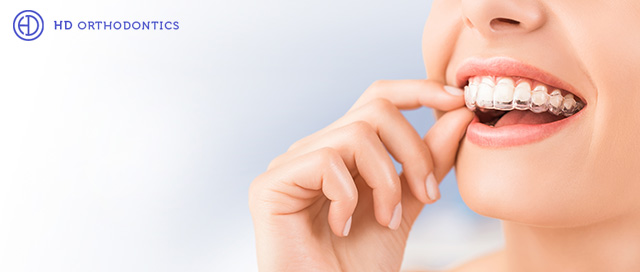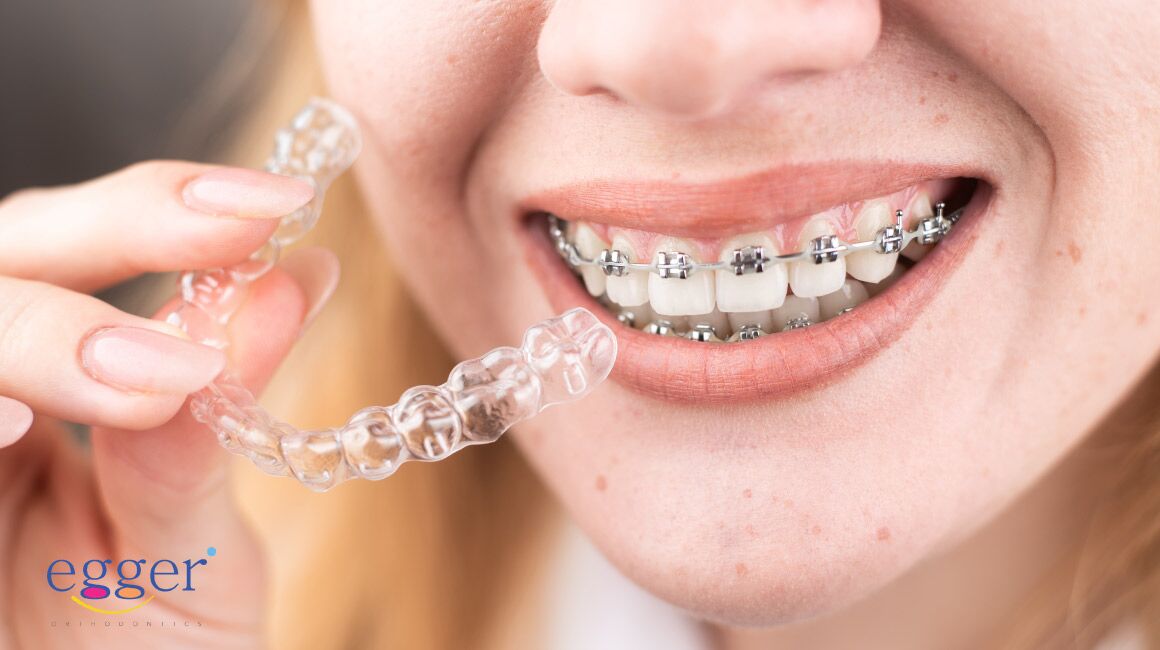How Invisalign Works: Your Guide to Clear Aligners and Their Effectiveness
How Invisalign Works: Your Guide to Clear Aligners and Their Effectiveness
Blog Article
Invisalign vs. Conventional Dental braces: Which Alternative Is Right for You?
When considering orthodontic treatment, the option in between Invisalign and typical dental braces presents several essential aspects that warrant mindful analysis. Invisalign offers a very discreet alternative with removable aligners, while conventional braces supply a much more noticeable yet efficient remedy for extreme imbalance. Each alternative incorporates distinctive advantages and downsides connected to visual appeals, comfort, treatment duration, and cost. Understanding these nuances is crucial for making an informed choice that straightens with your individual choices and way of life. The concern stays: which choice will best meet your orthodontic demands and assumptions?
Overview of Therapy Choices

In comparison, conventional dental braces contain metal brackets and cords that are bonded to the teeth. This technique uses continual pressure gradually to attain alignment. While efficient for intricate orthodontic issues, conventional dental braces call for normal check outs for changes and can posture challenges in preserving dental health as a result of the difficulty of cleaning around brackets and cables.
Both options have their benefits, and the option commonly depends upon specific dental conditions, lifestyle preferences, and client compliance. Eventually, getting in touch with an orthodontic professional is essential for identifying the most appropriate treatment plan tailored to individual needs. Understanding the nuances of each option can considerably influence the overall success of orthodontic treatment.
Visual Considerations
A significant variable affecting the option between Invisalign and conventional braces is the aesthetic allure each treatment provides. Invisalign aligners are crafted from clear plastic, making them practically unnoticeable when worn. This discreet look is specifically attracting adults and teenagers that may feel awkward concerning their orthodontic treatment. The ability to maintain an all-natural smile throughout the positioning process can significantly boost the individual's confidence in social and professional setups.
On the other hand, traditional dental braces contain steel brackets and cords, which can be a lot more noticeable. While innovations in orthodontic innovation have actually resulted in the growth of smaller braces and colored elastics, typical braces still keep a more noticeable account. For some individuals, the presence of braces might deter them from seeking essential treatment.
Inevitably, the choice between Invisalign and typical braces might pivot on personal choices regarding looks. Patients who focus on discernment typically lean towards Invisalign, while those who are less concerned concerning visibility may choose typical braces. Comprehending the visual effects of each option is important for making an educated choice that aligns with one's way of life and choices.
Convenience and Convenience

In terms of convenience, Invisalign aligners are detachable, allowing clients to enjoy their favored foods without limitation and preserve optimal dental hygiene. Brushing and flossing are streamlined, as the aligners can be obtained throughout these regimens, whereas conventional braces call for cautious maneuvering around braces and cables.
In comparison, conventional dental braces necessitate routine changes, making them less practical for those with active schedules. Generally, the comfort and benefit click resources of Invisalign make it an enticing choice for lots of people seeking orthodontic treatment.
Treatment Period and Effectiveness
While both Invisalign and standard dental braces are effective in fixing oral imbalances, the period of treatment can vary substantially in between the 2 options. Generally, Invisalign therapy can take anywhere from 12 to 18 months, depending upon the intricacy of the instance. The clear aligners function by gradually shifting teeth into their preferred settings, and normal follow-ups with an orthodontist aid ensure progress stays on the right track.
In comparison, typical dental braces often require a longer commitment, typically ranging from 18 months to three years. This is due to their fixed nature and making use of wires and brackets, which can be more effective for intricate instances and extreme imbalances (Invisalign). The therapy efficiency of standard braces is well-documented, as they enable precise adjustments and greater control over tooth activity
Inevitably, the option between Invisalign and conventional dental braces might depend upon both the expected treatment period and the details oral problems at hand. Consulting with an orthodontist is essential, as they can provide customized suggestions based on individual demands, making sure the selected method straightens with preferred outcomes and timeframes.
Cost Contrast and Insurance Coverage Options
Price plays a considerable role in the decision-making procedure for people considering orthodontic therapy, whether choosing for Invisalign or traditional dental braces. Generally, the price of Invisalign varieties from $3,000 to $8,000, while traditional dental braces usually cost in between $2,000 and $6,000. Factors affecting these costs consist of the complexity of the instance, the duration of therapy, and geographical location.
Insurance policy coverage can substantially impact out-of-pocket expenditures. Numerous oral insurance strategies provide partial protection for orthodontic therapies, however the specifics can differ widely. It is vital for patients to examine their insurance plan to establish the extent of insurance coverage for either option. Typically, typical braces may be extra frequently covered by insurance coverage strategies contrasted to Invisalign, which some insurance companies classify as an aesthetic procedure.
Additionally, several orthodontic methods use versatile layaway plan, making both therapy alternatives extra accessible. Patients ought to ask regarding prospective financing choices and discount rates for in advance repayments. Examining the overall expense, including insurance coverage benefits and payment plans, is essential for making an informed decision that straightens with both visual choices and spending plan considerations.

Verdict
In recap, the selection in between Invisalign and standard dental braces rests on several elements, including aesthetic choices, convenience, treatment duration, click site and cost. Invisalign offers a very discreet, detachable choice that helps with oral health and nutritional versatility, while conventional braces might be better for complicated dental concerns and commonly come at a lower rate point. Ultimately, consultation with an orthodontist is essential to analyze private situations and determine one of the most suitable therapy choice for achieving optimum oral alignment.
When taking into consideration orthodontic treatment, the choice in between Invisalign and conventional dental braces provides several crucial elements that warrant cautious analysis.Comparing Invisalign and traditional dental braces reveals unique treatment choices for orthodontic adjustment.While both Invisalign and typical braces are reliable in fixing oral misalignments, the duration of therapy can vary dramatically between the 2 options.Expense plays a substantial role in the decision-making procedure for people thinking about orthodontic therapy, whether opting for Invisalign or standard dental braces.In summary, the option in between Invisalign and conventional click here to find out more dental braces hinges on multiple variables, consisting of aesthetic preferences, convenience, treatment period, and cost.
Report this page